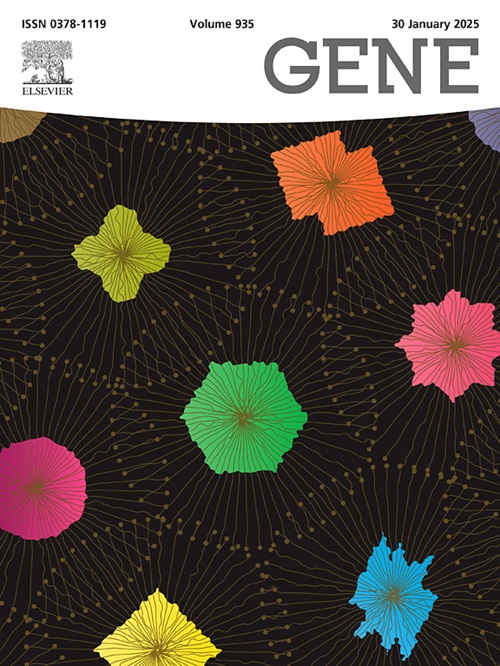Evaluation of hypoxia pathway genes and serum parameters in new coronavirus pneumonia (COVID-19)
IF 2.6
3区 生物学
Q2 GENETICS & HEREDITY
引用次数: 0
Abstract
Background
Coronavirus disease-2019 (COVID-19) causes severe hypoxemia. Unlike normal pneumonia, pneumonia due to COVID-19 causes oxygen deprivation without breathing difficulties (i.e., silent hypoxia). We evaluated the relationship between COVID-19 and hypoxemia and examined possible mechanisms of pneumonia from the perspective of gene expression (HIF1A, vascular endothelial growth factor [VEGF], NF-kB, MEKK1, and EGFR) using real-time PCR and ELISA for serum parameters.
Methods
We evaluated 100 individuals (50 patients and 50 controls). The patients were individuals with respiratory symptoms and pneumonia who were COVİD-19 positive. The relative quantification of standardized samples wa s calculated according to the formula 2 -ΔΔCT. Receiver operating curve (ROC) analysis was made to define the diagnostic power of the genes. The expression changes of four genes in the hypoxia pathway were significant (excluding VEGF) and upregulated in the patients’ serums.
Results
The fold change values of the HIF1A, VEGF, NF-kB, MEKK1, and EGFR genes were 0.048, 0.688, 0.168, 0.207, and 0.171, respectively, in the cases checked against to the controls. The areas under the ROC values indicating the diagnostic power of the genes were 0.727, 0.538, 0.815, 0.734, and 0.936, respectively. Some serum parameters were significant (age, PCR, urea, LDH, WBC, ferritin, and pO2).
Conclusions
The upregulation of some genes in the hypoxia pathway in COVID-19 pneumonia shows that these genes and protein products are candidates for treatment targets. At the same time, the high discriminative power of two genes (NF-κB and EGFR) in patients compared to controls indicates their diagnostic potential in serum samples.
新型冠状病毒肺炎(COVID-19)缺氧途径基因及血清参数的评价
背景:冠状病毒病-2019 (COVID-19)导致严重的低氧血症。与普通肺炎不同,COVID-19引起的肺炎会导致缺氧,但不会出现呼吸困难(即无症状性缺氧)。我们利用实时荧光定量PCR和ELISA检测血清参数,从基因表达(HIF1A、血管内皮生长因子[VEGF]、NF-kB、MEKK1和EGFR)的角度评估COVID-19与低氧血症的关系,探讨肺炎的可能机制。方法:我们评估了100例个体(50例患者和50例对照组)。患者为呼吸道症状和肺炎患者,COVİD-19阳性。标准化样品的相对定量按公式2 -ΔΔCT计算。采用受试者工作曲线(Receiver operating curve, ROC)分析确定基因的诊断能力。缺氧通路中4个基因的表达变化显著(除VEGF外),且在患者血清中表达上调。结果:与对照组相比,HIF1A、VEGF、NF-kB、MEKK1、EGFR基因的折叠变化值分别为0.048、0.688、0.168、0.207、0.171。ROC值下表示基因诊断能力的面积分别为0.727、0.538、0.815、0.734、0.936。一些血清参数(年龄、PCR、尿素、乳酸脱氢酶、白细胞、铁蛋白和pO2)具有显著性。结论:COVID-19肺炎缺氧通路部分基因表达上调,表明这些基因和蛋白产物是治疗靶点的候选基因。同时,与对照组相比,两种基因(NF-κB和EGFR)在患者体内的高分辨能力表明它们在血清样本中的诊断潜力。
本文章由计算机程序翻译,如有差异,请以英文原文为准。
求助全文
约1分钟内获得全文
求助全文
来源期刊

Gene
生物-遗传学
CiteScore
6.10
自引率
2.90%
发文量
718
审稿时长
42 days
期刊介绍:
Gene publishes papers that focus on the regulation, expression, function and evolution of genes in all biological contexts, including all prokaryotic and eukaryotic organisms, as well as viruses.
 求助内容:
求助内容: 应助结果提醒方式:
应助结果提醒方式:


